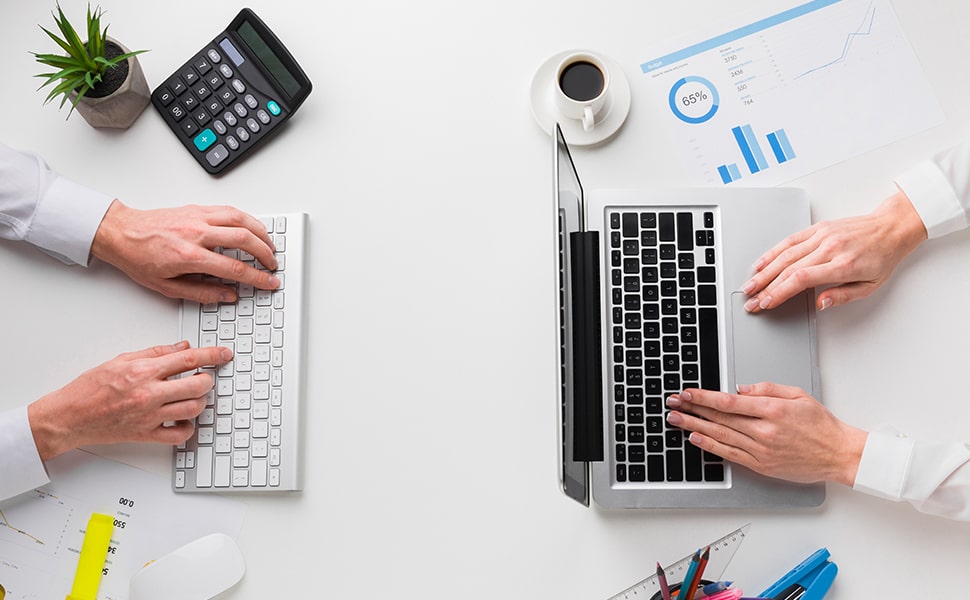

Learn How I Made My First $100 with IQ Option

Download my free guide + bonus video to start trading smart in 2025!

What is Binary Option Trading ?
Defination Of Binary Option
Binary options trading is a financial strategy where traders predict whether the price of an asset will rise or fall within a set time frame. Unlike traditional trading, where you buy and sell actual assets, binary options are essentially “yes or no” bets. You choose an asset—like stocks, commodities, or indices—and predict whether its price will be above or below a predetermined strike price by the expiration time.
If your prediction is correct, you receive a fixed payout, often $100, while a wrong prediction results in a complete loss of your initial investment. This all-or-nothing structure makes it both appealing and risky.
Binary options typically have a low barrier to entry, with contracts costing as little as $10–$100. The simplicity and quick expiration times attract many beginners, though it’s important to approach with caution. The risk is limited to the amount you invest per contract, but multiple contracts can increase exposure to significant losses.
Although binary options offer a quick way to potentially profit, they are often criticized for being too similar to gambling. Many experts recommend more stable investment strategies, like index funds, for long-term financial goals. If you do choose to try binary options, ensure you’re working with a regulated broker to minimize risk.
What is IQ Option?
What is IQ Option?
IQ Option is a popular online trading platform that provides individuals with the ability to trade a wide range of financial instruments, including stocks, forex, commodities, cryptocurrencies, and even binary options. Since its launch in 2013, IQ Option has gained a reputation for being user-friendly, offering a range of tools and resources for both novice and experienced traders.
The platform is designed to cater to a global audience and provides access to financial markets through both web and mobile applications. With its intuitive interface, it allows users to trade with ease, regardless of their level of experience. IQ Option’s primary focus is on simplifying trading and making it accessible to everyone, even those who are new to the world of finance.
Key Features of IQ Option
- Wide Range of Assets
One of the standout features of IQ Option is its diverse range of assets available for trading. Traders can invest in various instruments such as stocks from major global companies, cryptocurrencies like Bitcoin and Ethereum, commodities such as gold and oil, and even forex pairs. This variety ensures that traders have ample opportunities to diversify their portfolios and manage risk. - User-Friendly Interface
IQ Option’s interface is designed with ease of use in mind. Whether you’re a beginner or an experienced trader, navigating the platform is straightforward. The trading charts are easy to read, and the tools for technical analysis are highly accessible. Additionally, the mobile app mirrors the web platform, so traders can manage their trades on the go. - Demo Account
For beginners, IQ Option offers a demo account that allows users to practice trading without risking real money. This feature is invaluable for learning how to trade, understanding the platform’s tools, and testing different strategies before entering the real market. - Low Minimum Deposit and Flexible Trading Options
IQ Option is known for its low minimum deposit requirement, which makes it an appealing option for those who want to start trading with a small amount of capital. The platform allows users to open accounts with as little as $10, which is significantly lower than many other trading platforms. Furthermore, IQ Option provides various trading options, such as forex, binary options, and digital options, catering to different trading preferences and strategies. - Educational Resources
IQ Option offers a wide range of educational materials, including tutorials, webinars, and articles that help traders improve their skills and knowledge. Whether you’re a novice looking for the basics or an experienced trader seeking advanced techniques, the platform provides ample resources to assist you in developing a better understanding of the financial markets. - Regulation and Security
IQ Option is regulated by various financial authorities in different regions, which adds an extra layer of security for its users. The platform uses encryption technology to protect sensitive data and ensures that funds are handled securely. This helps establish trust with its user base, ensuring that the platform is legitimate and operates with transparency.
Trading on IQ Option
When it comes to trading on IQ Option, the platform allows users to engage in several types of trading activities. Some of the most common are:
- Binary Options: In binary options trading, users predict whether the price of an asset will go up or down within a specific time frame. If the prediction is correct, they receive a payout, while incorrect predictions result in the loss of the invested amount.
- Forex Trading: IQ Option allows traders to participate in the foreign exchange market by trading currency pairs. This market is highly liquid and operates 24/7, offering opportunities for day traders and long-term investors alike.
- Stock and Cryptocurrency Trading: In addition to forex, IQ Option gives traders access to stocks and cryptocurrencies, allowing them to benefit from the price fluctuations in these assets. The platform provides detailed charts and analysis tools to help users make informed trading decisions.
.
Mastering Binary Options Trading for Success in 2025
Binary options trading has gained immense popularity over the last few years due to its simplicity and the potential for high returns. However, like any form of trading, it requires knowledge, strategy, and discipline. For those looking to succeed in binary options trading in 2025, understanding the key aspects of the market and implementing effective strategies is essential. This article will guide you through the essential steps to mastering binary options trading and achieving success in 2025.
1. Understanding Binary Options
Binary options are financial instruments that allow traders to speculate on the price movement of various assets, including stocks, currencies, commodities, and indices. Unlike traditional forms of trading, binary options have a fixed payout and a set expiry time, making them simpler to understand.
A binary option is essentially a “yes or no” proposition: Will the price of an asset be higher or lower than a certain level at a specific time in the future? If you predict correctly, you receive a fixed payout. If your forecast is incorrect, you forfeit the invested amount.
2. The Importance of Education and Research
Before diving into binary options trading, it’s crucial to invest time in education and research. Success in binary options trading in 2025 will require a deep understanding of the financial markets, the assets you’re trading, and the various strategies at your disposal.
Learn the Basics
Start by learning the basic concepts of binary options trading. This includes understanding how options work, how to read price charts, and how market indicators are used to predict price movements. Many platforms offer demo accounts where you can practice trading with virtual money before risking real capital. Use these accounts to familiarize yourself with the trading platform and build your confidence.
Keep Up with Market Trends
The world of binary options trading is highly dynamic, and staying up-to-date with the latest market trends is critical. Follow financial news, economic reports, and developments that may affect asset prices. Global events, such as changes in government policies, interest rates, and geopolitical tensions, can lead to significant price fluctuations. Being aware of these factors can help you make better trading decisions.
3. Choose a Reliable Binary Options Broker
Selecting a trustworthy binary options broker is one of the most important decisions you’ll make when starting your journey. In 2025, there are numerous brokers available, but not all of them are reliable or trustworthy. Ensure you choose a licensed and regulated broker that complies with financial regulations to ensure the safety of your funds.
Check for Regulation
Regulation is a key factor in ensuring that a broker operates fairly and transparently. In many countries, financial authorities like the U.S. CFTC (Commodity Futures Trading Commission), the UK’s FCA (Financial Conduct Authority), and the European CySEC (Cyprus Securities and Exchange Commission) regulate binary options brokers. Check if the broker is regulated by a reputable authority before making any deposits.
Trading Platform and Tools
Choose a broker that offers an intuitive and user-friendly trading platform. The platform should provide essential tools such as real-time charts, technical analysis indicators, and risk management features. Additionally, consider brokers that offer mobile trading apps, allowing you to monitor and execute trades on the go.
Customer Support
Good customer support is essential in binary options trading. In case you encounter any issues or have questions, you need a responsive and reliable support team. Look for brokers that provide 24/7 support through multiple channels like live chat, email, and phone.
4. Develop a Trading Strategy
A trading strategy is a crucial component of success in binary options trading. Without a clear strategy, it’s easy to make impulsive decisions that could lead to significant losses. There are several strategies you can use to improve your chances of success.
Trend Following Strategy
One of the most popular strategies in binary options trading is the trend-following strategy. This strategy involves identifying the prevailing trend in the market (bullish or bearish) and making trades that align with that trend. Traders typically use technical indicators, such as moving averages and trendlines, to spot trends and predict future price movements.
Reversal Strategy
The reversal strategy is based on the idea that prices often move in cycles. After a period of strong movement in one direction, a reversal (or pullback) is expected. Traders use indicators like the Relative Strength Index (RSI) or stochastic oscillators to identify overbought or oversold conditions, signaling potential reversals in price direction.
Price Action Strategy
Price action trading focuses on analyzing historical price movements without relying on technical indicators. Traders using this strategy pay close attention to candlestick patterns, support and resistance levels, and price swings. By reading the price action, traders can predict the future direction of the asset.
News-Based Trading
News-based trading involves capitalizing on market volatility that occurs in response to major news events. Economic reports, corporate earnings announcements, and geopolitical developments can all lead to sharp price movements. By staying informed about upcoming events and understanding how they might impact asset prices, traders can make profitable trades based on news releases.
5. Risk Management is Key
While binary options trading offers the potential for high returns, it also carries the risk of significant losses. Implementing effective risk management strategies is crucial to long-term success in 2025.
Only Invest What You Can Afford to Lose
One of the most basic but important rules in trading is never to risk more money than you can afford to lose. Binary options trading can be highly volatile, and it’s important to enter the market with a clear understanding of your risk tolerance.
Set a Budget and Stick to It
Before you start trading, set a budget for your trading activities. This budget should be based on your risk tolerance and financial situation. Avoid the temptation to chase losses or increase your trading size when you’re on a losing streak.
Use Stop-Loss Orders
Many brokers offer stop-loss orders that allow you to limit your losses. By setting a stop-loss level, you can automatically close a trade if the price moves against you. This is a valuable tool for managing risk and ensuring that a single bad trade doesn’t wipe out your entire account.
Diversify Your Trades
Another key risk management technique is diversification. Instead of putting all your funds into one trade, consider spreading your investments across different assets. This helps mitigate the impact of a single loss and reduces your overall risk.
- Analyze and Learn from Your Trades
To continuously improve your binary options trading performance, it’s important to analyze your trades regularly. After each trade, take note of what went well and what didn’t. By identifying patterns in your successful and unsuccessful trades, you can refine your strategy and avoid making the same mistakes.
Keep a Trading Journal
Keeping a trading journal is a valuable method for monitoring your progress.. Record the details of each trade, including the asset, entry and exit points, trade duration, and the outcome. Review your journal periodically to identify areas for improvement and to help you stay focused on your long-term goals.
Be Patient and Disciplined
In 2025, one of the most important skills you’ll need as a binary options trader is patience. Success won’t come overnight, and there will be ups and downs along the way. Stay disciplined, stick to your strategy, and avoid impulsive decisions based on short-term market fluctuations.
- Leverage Technology to Your Advantage
In 2025, technology plays a vital role in enhancing trading performance. By leveraging advanced trading tools, you can gain an edge over other traders. Some of the technologies that can improve your trading include:
Trading Bots
Trading bots are automated software programs that can execute trades based on pre-defined criteria. These bots use algorithms to analyze market data and place trades on your behalf. While not foolproof, trading bots can help you take advantage of market opportunities even when you’re not actively monitoring the markets.
AI and Machine Learning
Artificial intelligence (AI) and machine learning technologies are revolutionizing the way traders analyze data. AI-powered tools can process vast amounts of market data, identify trends, and make predictions faster and more accurately than humans. These tools can be integrated into your trading strategy to improve decision-making.
- Stay Disciplined and Manage Emotions
One of the biggest challenges in binary options trading is managing emotions. Greed, fear, and frustration can cloud your judgment and lead to poor decisions. To succeed in 2025, it’s crucial to remain disciplined and avoid letting emotions dictate your trades.
Stick to Your Plan
Develop a solid trading plan and stick to it, even when faced with adversity. Consistency is key to long-term success. Avoid making emotional decisions based on short-term fluctuations in the market.
Take Breaks
Trading can be mentally exhausting, and it’s important to take regular breaks to avoid burnout. Step away from the screen when necessary, especially if you’re feeling frustrated or overwhelmed. A clear mind will help you make better trading decisions.
Mastering binary options trading for success in 2025 requires a combination of education, strategy, risk management, and discipline. By learning the basics, developing a trading strategy, choosing a reliable broker, and managing risk effectively, you can increase your chances of success in this dynamic market. Remember, trading is not about getting rich quickly; it’s about making consistent, well-informed decisions. Stay patient, keep learning, and approach the market with a disciplined mindset, and you’ll be well on your way to mastering binary options trading in 2025.
Achieving Success in IQ Option Trading with Binary Options
Binary options trading has become an increasingly popular form of financial trading, offering traders the opportunity to speculate on the price movements of various assets like stocks, currencies, commodities, and indices. Among the many platforms available for trading binary options, IQ Option stands out due to its user-friendly interface, educational resources, and variety of tools. However, success in binary options trading requires more than just using the right platform; it demands the development of a well-thought-out strategy, risk management skills, and a disciplined approach.
This article explores the steps to achieve success in IQ Option trading with binary options, providing actionable insights and tips to help you navigate the world of binary options and maximize your chances of profitability.
1. Understanding Binary Options and IQ Option
Before diving into the specifics of achieving success with binary options on IQ Option, it’s essential to understand what binary options are and how the IQ Option platform works.
What Are Binary Options?
Binary options are financial instruments that allow you to predict whether the price of an asset will be higher or lower than a specific level at a set time. The term “binary” refers to the two possible outcomes: either you win a fixed payout or lose the amount you invested. These options are considered simpler than traditional trading because they involve a straightforward “yes” or “no” decision regarding an asset’s price direction within a predetermined time frame.
Binary options are often used by traders to speculate on various markets, such as forex, stocks, commodities, and indices. The appeal of binary options lies in their fixed risk and reward structure, meaning you know your potential profit or loss before entering a trade.
IQ Option Overview
IQ Option is one of the most popular platforms for binary options trading. It is known for its intuitive design, accessibility, and diverse range of financial instruments. The platform allows you to trade binary options with a variety of assets, including forex pairs, stocks, cryptocurrencies, and commodities.
IQ Option is ideal for both beginner and advanced traders because it offers a free demo account for practicing without risking real money. The platform also features powerful tools for technical analysis, risk management, and a range of educational materials to help you sharpen your trading skills.
2. Setting Realistic Expectations
Achieving success in IQ Option binary options trading requires setting realistic goals and expectations. While it’s possible to make significant profits, it’s also important to recognize that losses are part of the game.
Start with a Demo Account
Before trading with real money, it’s wise to begin with a demo account. IQ Option offers a free demo account that allows you to practice trading with virtual funds. This is an excellent opportunity to familiarize yourself with the platform’s features and test different trading strategies without risking your capital.
Using the demo account helps you understand how binary options work, how to interpret price charts, and how to use technical indicators effectively. Once you feel comfortable, you can transition to real trading, but always with a clear understanding of the risks involved.
Be Prepared for Both Wins and Losses
Binary options trading is a high-risk activity, and no strategy can guarantee success 100% of the time. Even the most experienced traders experience losses, so it’s essential to approach trading with a mindset of managing risk and maximizing long-term profits rather than expecting immediate success.
3. Develop a Solid Trading Strategy
To achieve success in IQ Option with binary options, you need a well-defined trading strategy. A solid strategy helps you make informed decisions and avoid impulsive trades based on emotions.
Learn Technical Analysis
One of the key components of a successful binary options strategy is technical analysis. Technical analysis involves studying past price movements and using indicators to forecast future price trends. IQ Option offers a range of technical analysis tools, including candlestick charts, moving averages, RSI (Relative Strength Index), and Bollinger Bands, to help you identify entry and exit points for your trades.
By learning how to read charts and apply these technical indicators, you can make more informed decisions about whether to place a “Call” (buy) or “Put” (sell) option. The key is to understand how these indicators signal potential price movements and how they can be applied to predict future market behavior.
Use Trend-Following Strategies
One effective strategy for binary options trading is trend-following. This approach involves identifying the overall direction of the market and making trades that align with that trend. Whether the market is trending upward (bullish) or downward (bearish), trend-following strategies capitalize on the momentum to increase the chances of a profitable trade.
A popular trend-following method is the use of moving averages. By applying a simple moving average (SMA) or exponential moving average (EMA) to your chart, you can identify the prevailing trend and look for opportunities to trade in the direction of that trend. For instance, if the price is above the moving average, it may indicate an uptrend, while if it’s below, a downtrend might be in place.
Implement a Risk-Reward Strategy
Another crucial component of a binary options strategy is managing your risk-to-reward ratio. In binary options trading, the potential reward is fixed, but your risk is also predetermined based on the amount you invest. A sound risk-reward strategy ensures that you are not risking more than you can afford to lose on any single trade.
For example, a good rule of thumb is to risk no more than 2% of your trading capital on a single trade. This way, even if you experience consecutive losses, your capital is protected, and you can continue trading without depleting your account.
4. Master Risk Management
Successful traders understand the importance of risk management. In binary options trading, you can lose the full amount of your investment on a single trade, so it’s essential to have a risk management plan in place to protect your capital.
Set Stop-Loss Limits
IQ Option allows traders to set stop-loss orders to automatically close a position when it reaches a certain level of loss. This tool helps you limit potential losses and prevent emotional decisions that could lead to larger losses. It’s vital to determine your stop-loss level before placing a trade and stick to it, no matter what happens during the trade.
Diversify Your Trades
Instead of putting all your funds into one asset or trade, diversify your trades across different assets. This spreads your risk and helps you mitigate the impact of losses on any single trade. For example, you could trade a combination of forex pairs, stocks, and commodities, each with its own unique market dynamics.
Use Proper Position Sizing
Another important element of risk management is determining the appropriate position size. This refers to the amount of capital you allocate to each trade. By managing your position size effectively, you can reduce the impact of losing trades on your overall portfolio. Consider your risk tolerance and account size when deciding how much to invest per trade.
5. Stay Informed and Continue Learning
The financial markets are constantly changing, and staying informed is crucial for making successful trades. Keep up to date with the latest news, trends, and developments that could impact the markets you are trading in.
Follow Market News
Market news can significantly influence the price of assets, so it’s important to stay informed about current events. Economic reports, corporate earnings releases, and geopolitical events can all cause sharp price movements. For instance, an interest rate decision by a central bank or an unexpected political development can have a substantial impact on currency or stock prices.
IQ Option offers an economic calendar that highlights important events and news releases that may affect the markets. By keeping an eye on these events, you can anticipate potential market moves and plan your trades accordingly.
Learn from Your Trades
Continuous improvement is key to long-term success in binary options trading. After each trade, analyze the outcome and identify areas for improvement. Keep a trading journal where you can track your trades, noting the reasons behind each decision, the strategies used, and the results. Over time, this will help you recognize patterns, improve your decision-making process, and refine your strategy.
6. Emotions and Discipline: The Key to Longevity
One of the biggest challenges in binary options trading is controlling emotions. Fear, greed, and impatience can all lead to impulsive decisions and unnecessary losses. To achieve success in IQ Option binary options trading, you need to remain disciplined and stick to your strategy.
Avoid Chasing Losses
If you experience a series of losses, resist the temptation to “chase” those losses by increasing your position size in an attempt to recover. This can lead to even greater losses. Instead, take a step back, reassess your strategy, and continue trading with a clear head.
Take Breaks
Overtrading can lead to burnout and poor decision-making. If you feel tired or overwhelmed, take a break from the markets. It’s important to approach trading with a calm and focused mindset to make rational decisions.
Achieving success in IQ Option binary options trading requires a combination of knowledge, strategy, risk management, and emotional discipline. By understanding the mechanics of binary options, developing a sound trading strategy, managing your risk effectively, and continually learning from your experiences, you can increase your chances of profitability in 2025.
Remember, binary options trading is not a get-rich-quick endeavor. Success comes with time, patience, and consistent effort. Stay focused, be disciplined, and make informed decisions, and you’ll be well on your way to achieving success in IQ Option binary options trading.
How to Get Started with Binary Trading in QUOTEX in 2025
Introduction
Binary trading has gained immense popularity, and QUOTEX has become one of the most reliable platforms for traders worldwide. If you are new to binary trading and want to start trading on QUOTEX in 2025, this guide will provide you with essential steps to begin your journey. By understanding the basics, implementing effective strategies, and managing risks, you can enhance your chances of success in binary trading.
What is QUOTEX Binary Trading?
QUOTEX is a digital trading platform that allows users to speculate on the price movements of various assets, including forex, commodities, stocks, and cryptocurrencies. Traders predict whether an asset’s price will go up or down within a specific timeframe. If the prediction is correct, they earn a fixed payout; otherwise, they lose their investment.
Steps to Get Started with Binary Trading on QUOTEX
1. Create a QUOTEX Account
To start trading on QUOTEX, follow these steps:
- Visit the official QUOTEX website.
- Click on “Sign Up” and provide the required details (email, password, and preferred currency).
- Verify your email to activate your account.
- Log in to your account and explore the trading dashboard.
2. Understand the Trading Interface
QUOTEX offers a user-friendly interface with various tools to help traders analyze market trends. The trading dashboard consists of:
- Price Chart: Displays real-time price movements.
- Asset Selection: Choose from different financial instruments.
- Indicators and Tools: Use technical indicators like Moving Averages, RSI, and Bollinger Bands.
- Trading Controls: Set the trade amount, expiration time, and direction (UP or DOWN).
3. Use a Demo Account to Practice
For beginners, QUOTEX provides a demo account with virtual funds. This allows traders to practice strategies, understand market trends, and get comfortable with the platform before investing real money.
4. Fund Your Trading Account
Once confident with the demo account, deposit funds to start live trading.
- Go to the “Deposit” section.
- Choose a payment method (credit/debit card, e-wallets, cryptocurrencies, etc.).
- Enter the amount and confirm the transaction.
- The funds will be credited instantly to your account.
5. Learn Basic Trading Strategies
Understanding different trading strategies can improve your success rate. Some popular strategies include:
- Trend Trading: Identifying and trading in the direction of market trends.
- Breakout Strategy: Trading when the price breaks a key support or resistance level.
- Scalping: Making quick trades within short timeframes.
- News Trading: Analyzing economic news and trading based on market reactions.
6. Manage Risks Effectively
Risk management is crucial in binary trading. Implement the following techniques:
- Invest Wisely: Avoid investing more than 2% of your trading capital per trade.
- Use Stop-Loss and Take-Profit Strategies: Even though binary trading has fixed outcomes, setting predefined risk parameters can help in disciplined trading.
- Diversify Trades: Spread investments across different assets to minimize risk.
7. Master Technical and Fundamental Analysis
Successful traders rely on both technical and fundamental analysis to make informed decisions.
- Technical Analysis: Study price patterns, chart indicators, and trends.
- Fundamental Analysis: Monitor economic news, corporate earnings, and interest rates.
8. Choose the Right Trading Timeframe
Different trading timeframes suit different trading styles:
- Short-Term (1-5 minutes): Best for quick profits but requires rapid decision-making.
- Medium-Term (15-60 minutes): Allows better market analysis.
- Long-Term (1 hour or more): Ideal for fundamental traders.
9. Stay Updated with Market Trends
Monitor global financial news through platforms like Bloomberg, Reuters, and Forex Factory to understand market movements and make informed trades.
10. Avoid Common Trading Mistakes
Beginners often make avoidable mistakes, such as:
- Overtrading: Trading excessively can lead to losses.
- Ignoring Risk Management: Not setting limits on losses can be dangerous.
- Emotional Trading: Avoid impulsive decisions driven by fear or greed.
- Relying Solely on Signals: Always conduct personal market research before trading.
LATEST NEWS
Latest Posts
Elevate your business landscape with our transformative solutions, harnessing innovation to drive…
Outpace competition with our proven digital solutions, designed to propel your business…
Simplify your digital marketing efforts with our expert team at the helm.…






💹 Learn How I Made My First $100 with IQ Option
Download my free guide + bonus video to start trading smart in 2025!




